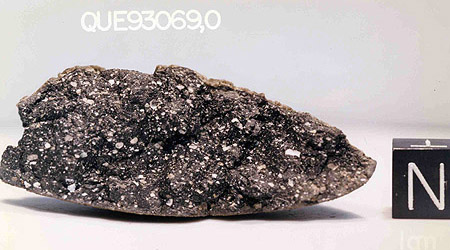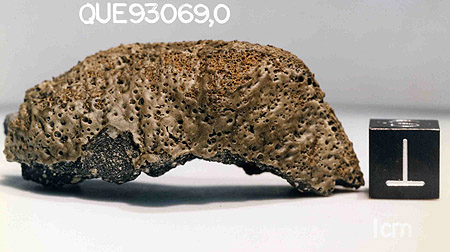
|
This view of the lunar meteorite shows a brown frothy fusion crust. The dark gray interior is revealed to the lower left. More will be said about achondrites in the section on iron meteorites! Next: Iron meteoritesImage credits: The Antarctic Meteorite archive hosted at NASA's Johnson Space Center. Meteorites are so scientifically interesting that the National Science Foundation has funded years of efforts aimed at finding meteorites in Antarctica. The famous Martian meteorite (ALH84001) with putative evidence for ancient life on Mars was found in Antarctica. |
![]()
|
|
|

